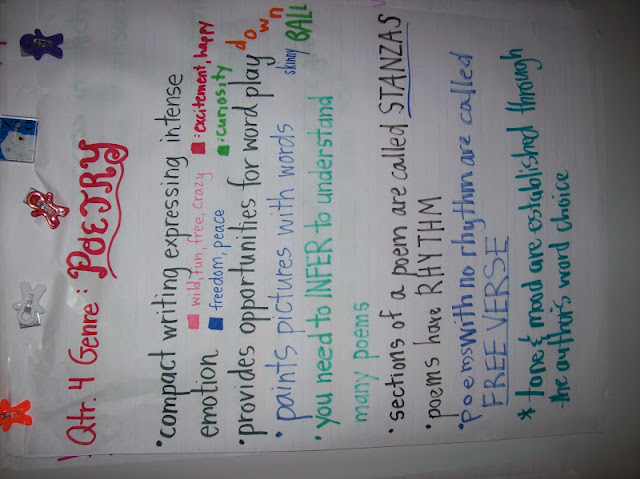My biggest area for growth this year within the Comprehensive Literacy Model is my effectiveness as a facilitator of literature discussion groups (LDGs). I continue to learn more and more with my literacy coach, Candice Johnson, and over time, LDGs have become one of my favorite groups to plan for when it comes to small-group instruction. You want me to help kids to become deeper thinkers and discussers of text? Um, yes, please! I'm in!
Last week, I did a book introduction and orientation to launch
Pink and Say by Patricia Polocco with six of my students. Not only does the Civil War content of the book overlap with our study of people in social studies, but it is also a text that has deep meaning on a variety of levels. These kinds of rich, culturally responsive texts are exactly what we want in the hands our our kids as often as possible. Then give them the chance to flag their thoughts and discuss the text with one another and the experience becomes even more powerful. I have goosebumps just typing about it.
Today I met with students to facilitate their discussion of the first half of the book. I gave students a purpose for reading prior to our first meeting and that was for them to flag examples of loyalty and to write a response (using their flagged thoughts as their guide) in their Thoughtful Logs. What's great is that other than calling the group together at our side table with their materials (
Pink and Say text and Thoughtful Logs) and saying, "Let's start our LDG by focusing on our theme of loyalty. Who would like to start the discussion?" - I really had to do nothing more. The group ran itself, and I could sit back and take anecdotal notes on the kinds of contributions my students made with one another about the text. Although the discussion started on the topic of loyalty, it opened doors for the kids to talk about a variety of inferences, wonderings, and connections on a variety of topics and levels. What's great is that students were problem-solving together, and I just got to take notes and smile.
After about 10 minutes of discussion, I finally had to stop the group because I was convinced they would have talked for another half hour had I let them. I had never been so happy to hear moans of disappointment from my students in my whole life! :) It was my turn to briefly introduce the second half of the book, locate a few potential problem areas, and establish their purpose for reading. This time, I wanted students to flag some of the challenges Pink and Say went through both individually and as a pair. You'll see in the picture below, I put a post-it on the inside back cover of each student's book. Our district calls this a 'common focus flag'. It reminds students what to flag for (that will lead our discussion later on). Because it's on the inside back cover, the focus flag never gets lost on a page. It just stares kids in the face the whole time to ensure students have a common focus for reading (in addition to their other thoughts). This post-it below reminds kids to 1.) flag
challenges they find in the text (goal = find at least
3), 2. Write a two paragraph response in their Thoughtful Log after they've finished reading that includes a one-paragraph
summary and one-paragraph about the
challenges Pink and Say faced.
Students then went back to their desks to read the rest of Pink and Say independently. Both these readers are flagging challenges they've found while reading. In this picture, you see the light yellow 'common focus flag' sticking out of the back of the boy's Pink and Say text below.
Here are two of the flags he put in his book. In addition to flagging areas in the text that serve as evidence of our LDG's common focus, students are also encouraged to flag anything else they believe would spark deep conversation with the group. I love how he flagged and wrote Pink called slavery 'the sickness' and can already hear the deep discussion that could step from such a metaphor. What's even better is that the thought came from HIM, not me as his teacher. If we want students to be deep, independent thinkers of text, we have to provide kids with opportunities like LDGs to let them practice...and shine!
Here is another student's flagged text. On the left is her own flag for a challenge she discovered while reading. On the right, you can see the 'common focus flag' I stuck in the inside back cover of each student's book to remind them of their task/s.

Tomorrow students will continue to work on this assignment during independent reading time. While they work, I will do one-on-one conferences with each student in the LDG to establish their levels of independent comprehension and clarify any misunderstandings. This is also a good time to have a student read short sections of a page to check for fluency or word-solving strategies. By meeting with each student prior to our next group LDG session, all students can feel more confident about their verbal contributions. For my shiest readers, it is during our one-on-one time that I can say to them, "THAT was some really good thinking. Can you share that tomorrow when we discuss this text?" When they nod with a smile, you've just made a mini-pact to ensure their voice gets heard!






















